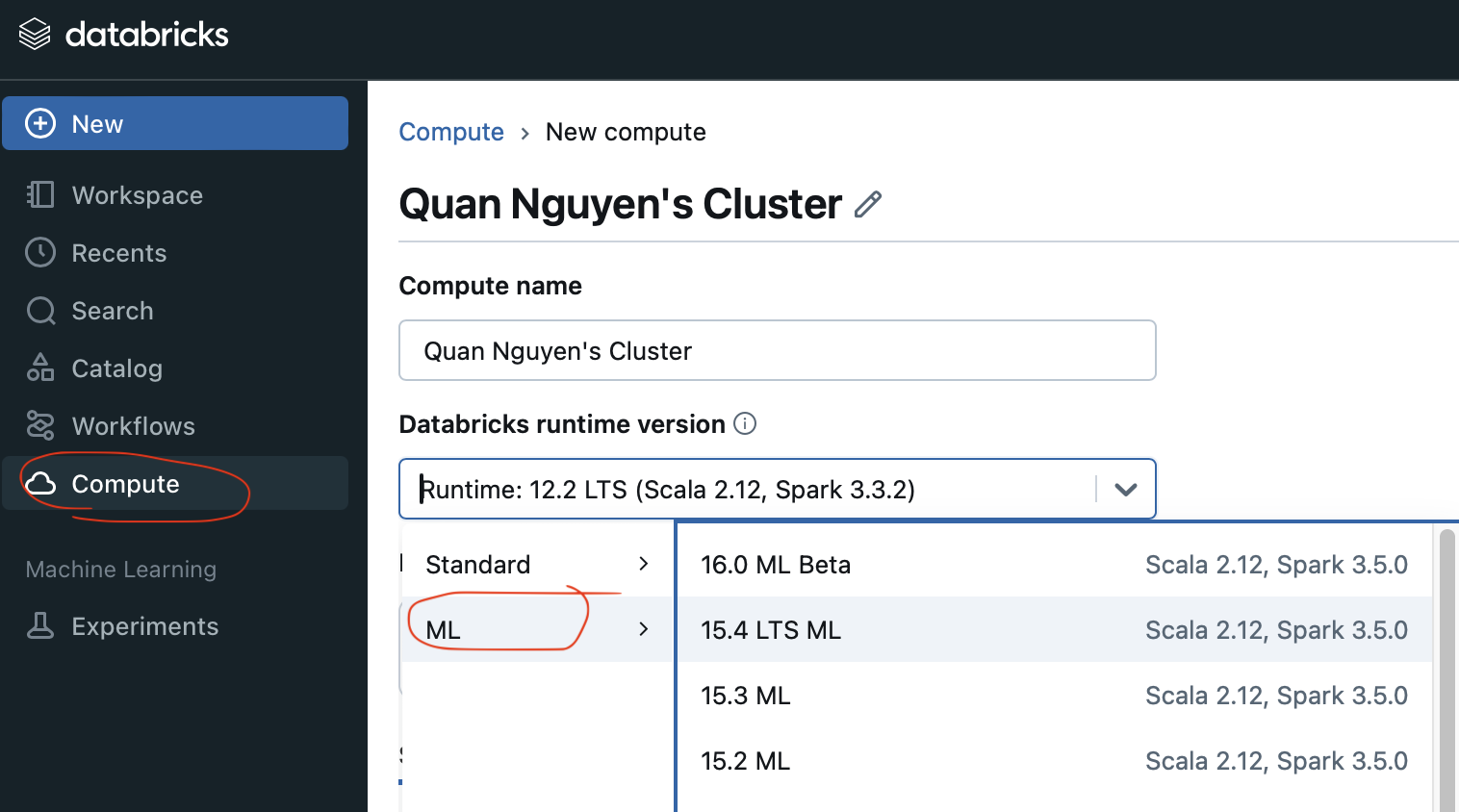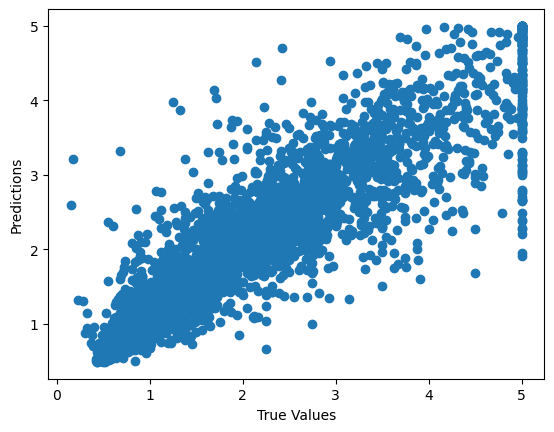Lecture 15: Monitoring ML experiements with mlflow#

Learning objectives#
By the end of this lecture, students should be able to:
Understand the purpose and components of MLflow.
Learn how to set up and use MLflow for experiment tracking.
Explore model management and deployment with MLflow.
See practical examples of using MLflow in a machine learning project.
Introduction#
MLflow is an open-source platform designed to manage the end-to-end machine learning lifecycle. It provides tools for experiment tracking, model management, and deployment, making it easier for data scientists and machine learning engineers to develop, track, and deploy machine learning models.

1. Purpose of MLflow#
Why MLflow?#
Machine learning projects often involve multiple stages, including data preprocessing, model training, hyperparameter tuning, and deployment. Managing these stages can be challenging, especially when working in a team. MLflow addresses these challenges by providing a unified platform to:
Track Experiments: Record and compare different runs of your machine learning experiments.
Manage Models: Store, version, and share machine learning models.
Deploy Models: Deploy models to various environments, including cloud services and edge devices.
2. Components of MLflow#
MLflow consists of four main components:
MLflow Tracking:
Allows you to log and query experiments.
Records parameters, metrics, and artifacts (e.g., model files, plots).
MLflow Projects:
Provides a standardized format for packaging data science code.
Facilitates reproducibility and sharing of projects.
MLflow Models:
Defines a standard format for packaging machine learning models.
Supports multiple flavors (e.g., Python function, TensorFlow, PyTorch).
MLflow Model Registry:
Centralized repository to manage model versions.
Supports model lifecycle management (e.g., staging, production).
3. Setting Up MLflow#
Installation on databricks#
To use the mlflow experiement tracking function, you need to create a cluster that follows the ML template
Open data bricks community version: https://community.cloud.databricks.com
Under the
Computetab, selectCreate computeUnder
Databricks runtime version, select theMLtab, and select the latest versionAfter waiting for the cluster up and running, you can create a new notebook. Now you can access the mlflow experiement tracking under the
experienmenttab on the left hand side

If you’re using vscode locally#
Install MLflow using pip:
# pip install mlflow
Starting the MLflow Tracking Server#
Start the MLflow tracking server to log and view experiments:
Open a terminal
Type
mflow ui
You should get an output along the line of
[2024-10-28 20:24:27 -0700] [88575] [INFO] Starting gunicorn 23.0.0
[2024-10-28 20:24:27 -0700] [88575] [INFO] Listening at: http://127.0.0.1:5000 (88575)
[2024-10-28 20:24:27 -0700] [88575] [INFO] Using worker: sync
[2024-10-28 20:24:27 -0700] [88576] [INFO] Booting worker with pid: 88576
[2024-10-28 20:24:27 -0700] [88577] [INFO] Booting worker with pid: 88577
[2024-10-28 20:24:28 -0700] [88578] [INFO] Booting worker with pid: 88578
[2024-10-28 20:24:28 -0700] [88579] [INFO] Booting worker with pid: 88579
This command starts the MLflow UI, accessible at http://127.0.0.1:5000.
Open a new web browser and paste in the mlflow ui link: http://127.0.0.1:5000
You should be able to see the mlflow tracking UI showing up now

4. Using MLflow for Experiment Tracking#
Example: Tracking a Simple Experiment#
Let’s first import a housing dataset
from sklearn.datasets import fetch_california_housing
from sklearn.ensemble import RandomForestRegressor
from sklearn.metrics import root_mean_squared_error
from sklearn.model_selection import train_test_split
import mlflow
# Load the California housing dataset
housing = fetch_california_housing(as_frame=True)
print(housing.DESCR)
.. _california_housing_dataset:
California Housing dataset
--------------------------
**Data Set Characteristics:**
:Number of Instances: 20640
:Number of Attributes: 8 numeric, predictive attributes and the target
:Attribute Information:
- MedInc median income in block group
- HouseAge median house age in block group
- AveRooms average number of rooms per household
- AveBedrms average number of bedrooms per household
- Population block group population
- AveOccup average number of household members
- Latitude block group latitude
- Longitude block group longitude
:Missing Attribute Values: None
This dataset was obtained from the StatLib repository.
https://www.dcc.fc.up.pt/~ltorgo/Regression/cal_housing.html
The target variable is the median house value for California districts,
expressed in hundreds of thousands of dollars ($100,000).
This dataset was derived from the 1990 U.S. census, using one row per census
block group. A block group is the smallest geographical unit for which the U.S.
Census Bureau publishes sample data (a block group typically has a population
of 600 to 3,000 people).
A household is a group of people residing within a home. Since the average
number of rooms and bedrooms in this dataset are provided per household, these
columns may take surprisingly large values for block groups with few households
and many empty houses, such as vacation resorts.
It can be downloaded/loaded using the
:func:`sklearn.datasets.fetch_california_housing` function.
.. rubric:: References
- Pace, R. Kelley and Ronald Barry, Sparse Spatial Autoregressions,
Statistics and Probability Letters, 33 (1997) 291-297
# input data
housing.data
| MedInc | HouseAge | AveRooms | AveBedrms | Population | AveOccup | Latitude | Longitude | |
|---|---|---|---|---|---|---|---|---|
| 0 | 8.3252 | 41.0 | 6.984127 | 1.023810 | 322.0 | 2.555556 | 37.88 | -122.23 |
| 1 | 8.3014 | 21.0 | 6.238137 | 0.971880 | 2401.0 | 2.109842 | 37.86 | -122.22 |
| 2 | 7.2574 | 52.0 | 8.288136 | 1.073446 | 496.0 | 2.802260 | 37.85 | -122.24 |
| 3 | 5.6431 | 52.0 | 5.817352 | 1.073059 | 558.0 | 2.547945 | 37.85 | -122.25 |
| 4 | 3.8462 | 52.0 | 6.281853 | 1.081081 | 565.0 | 2.181467 | 37.85 | -122.25 |
| ... | ... | ... | ... | ... | ... | ... | ... | ... |
| 20635 | 1.5603 | 25.0 | 5.045455 | 1.133333 | 845.0 | 2.560606 | 39.48 | -121.09 |
| 20636 | 2.5568 | 18.0 | 6.114035 | 1.315789 | 356.0 | 3.122807 | 39.49 | -121.21 |
| 20637 | 1.7000 | 17.0 | 5.205543 | 1.120092 | 1007.0 | 2.325635 | 39.43 | -121.22 |
| 20638 | 1.8672 | 18.0 | 5.329513 | 1.171920 | 741.0 | 2.123209 | 39.43 | -121.32 |
| 20639 | 2.3886 | 16.0 | 5.254717 | 1.162264 | 1387.0 | 2.616981 | 39.37 | -121.24 |
20640 rows × 8 columns
# target column which is the median house value for California districts, expressed in hundreds of thousands of dollars ($100,000)
housing.target
0 4.526
1 3.585
2 3.521
3 3.413
4 3.422
...
20635 0.781
20636 0.771
20637 0.923
20638 0.847
20639 0.894
Name: MedHouseVal, Length: 20640, dtype: float64
We run a typical ML pipeline using linear regression
from sklearn.linear_model import LinearRegression
# Split the data into training and testing sets
X_train, X_test, y_train, y_test = train_test_split(housing.data, housing.target, test_size=0.2, random_state=42)
# Train the model
model = LinearRegression()
model.fit(X_train, y_train)
# Predict and evaluate
predictions = model.predict(X_test)
rmse = root_mean_squared_error(y_test, predictions)
print(f"RMSE: {rmse}")
RMSE: 0.7455813830127763
Set your mlflow ui
Before running the mflow code, you need to specify where the mlflow ui is by running
mlflow.set_tracking_uri(uri="http://127.0.0.1:5000")
autologging#
MLflow can automatically log training code written in many ML and deep learning frameworks. This is the easiest way to get started using MLflow tracking.
Okay, let’s see how can we use mlflow to keep track of our experiments
# Enable autolog()
# mlflow.sklearn.autolog() requires mlflow 1.11.0 or above.
mlflow.sklearn.autolog()
# With autolog() enabled, all model parameters, a model score, and the fitted model are automatically logged.
with mlflow.start_run():
# Split the data into training and testing sets
X_train, X_test, y_train, y_test = train_test_split(housing.data, housing.target, test_size=0.2, random_state=42)
# Train the model
model = LinearRegression()
model.fit(X_train, y_train)
# Predict and evaluate
predictions = model.predict(X_test)
rmse = root_mean_squared_error(y_test, predictions)
2024/10/29 09:51:14 INFO mlflow.tracking._tracking_service.client: 🏃 View run overjoyed-sheep-599 at: http://127.0.0.1:5000/#/experiments/0/runs/2344774fd4c7477099e0dc05a999f012.
2024/10/29 09:51:14 INFO mlflow.tracking._tracking_service.client: 🧪 View experiment at: http://127.0.0.1:5000/#/experiments/0.
By default, mlflow.sklearn.autolog will log all model parameters and model scores.
manual logging#
You can also manually log the model, model parameters, evaluation metrics, and other artifacts using mlflow.log_param(), mlflow.log_metric(), mlflow.log_model(), and mlflow.log_artifact(). These functions let you control exactly which parameters and metrics are logged, and also let you log other artifacts of the run such as tables and plots.
from numpy import savetxt
# Disable autolog
mlflow.sklearn.autolog(disable=True)
# Further code without autologging
with mlflow.start_run():
# Split the data into training and testing sets
X_train, X_test, y_train, y_test = train_test_split(housing.data, housing.target, test_size=0.2, random_state=42)
# Train the model
model = LinearRegression()
model.fit(X_train, y_train)
# Predict and evaluate
predictions = model.predict(X_test)
rmse = root_mean_squared_error(y_test, predictions)
# Manually log parameters, metrics, and model
mlflow.log_param("model_type", "LinearRegression")
mlflow.log_metric("rmse", rmse)
mlflow.sklearn.log_model(model, "model")
# Save the table of predicted values
savetxt('predictions.csv', predictions, delimiter=',')
# Log the saved table as an artifact
mlflow.log_artifact("predictions.csv")
2024/10/29 09:57:14 WARNING mlflow.models.model: Model logged without a signature and input example. Please set `input_example` parameter when logging the model to auto infer the model signature.
2024/10/29 09:57:14 INFO mlflow.tracking._tracking_service.client: 🏃 View run bald-slug-722 at: http://127.0.0.1:5000/#/experiments/0/runs/9fba11a4f4f64fe89c29cb65c3d7af17.
2024/10/29 09:57:14 INFO mlflow.tracking._tracking_service.client: 🧪 View experiment at: http://127.0.0.1:5000/#/experiments/0.
View Results in MLflow UI
Open the MLflow UI at http://127.0.0.1:5000 to view the logged experiment.
5. Model Management and Deployment with MLflow#
6. Practical Examples#
Example 1: Hyperparameter Tuning#
Track different hyperparameter configurations and their performance metrics.
# Enable MLflow autologging
mlflow.sklearn.autolog()
with mlflow.start_run():
model = RandomForestRegressor(n_estimators=200, max_depth=10, random_state=42)
model.fit(X_train, y_train)
predictions = model.predict(X_test)
rmse = root_mean_squared_error(y_test, predictions)
mlflow.log_param("n_estimators", 200)
mlflow.log_param("max_depth", 10)
mlflow.log_param("model_type", "RandomForestRegressor")
mlflow.log_metric("rmse", rmse)
mlflow.sklearn.log_model(model, "model")
2024/10/29 10:00:04 WARNING mlflow.models.model: Model logged without a signature and input example. Please set `input_example` parameter when logging the model to auto infer the model signature.
2024/10/29 10:00:04 INFO mlflow.tracking._tracking_service.client: 🏃 View run rogue-foal-91 at: http://127.0.0.1:5000/#/experiments/0/runs/f61806c0449e4857a7019881fd9294c7.
2024/10/29 10:00:04 INFO mlflow.tracking._tracking_service.client: 🧪 View experiment at: http://127.0.0.1:5000/#/experiments/0.
Example 2: Logging Artifacts#
Log additional artifacts such as plots and data files.
import matplotlib.pyplot as plt
with mlflow.start_run():
model = RandomForestRegressor(n_estimators=100, random_state=42)
model.fit(X_train, y_train)
predictions = model.predict(X_test)
rmse = root_mean_squared_error(y_test, predictions)
mlflow.log_param("n_estimators", 100)
mlflow.log_metric("rmse", rmse)
mlflow.sklearn.log_model(model, "model")
mlflow.log_param("model_type", "RandomForestRegressor")
# Log a plot
plt.scatter(y_test, predictions)
plt.xlabel("True Values")
plt.ylabel("Predictions")
plt.savefig("scatter_plot.png")
mlflow.log_artifact("scatter_plot.png")
2024/10/29 10:06:40 WARNING mlflow.models.model: Model logged without a signature and input example. Please set `input_example` parameter when logging the model to auto infer the model signature.
2024/10/29 10:06:40 INFO mlflow.tracking._tracking_service.client: 🏃 View run flawless-gnat-386 at: http://127.0.0.1:5000/#/experiments/0/runs/855834f31a20438ab8f998fdc6dc7c7d.
2024/10/29 10:06:40 INFO mlflow.tracking._tracking_service.client: 🧪 View experiment at: http://127.0.0.1:5000/#/experiments/0.

Example 3: Running multiple models#
# Define the models
models = {
"LinearRegression": LinearRegression(),
"RandomForestRegressor": RandomForestRegressor(n_estimators=100, random_state=42),
"KNeighborsRegressor": KNeighborsRegressor(n_neighbors=5)
}
from sklearn.linear_model import LinearRegression
from sklearn.ensemble import RandomForestRegressor
from sklearn.neighbors import KNeighborsRegressor
mlflow.sklearn.autolog()
# Train and log each model
for model_name, model in models.items():
with mlflow.start_run(run_name=model_name):
# Train the model
model.fit(X_train, y_train)
# Predict and evaluate
predictions = model.predict(X_test)
rmse = root_mean_squared_error(y_test, predictions)
# Log parameters, metrics, and model
# mlflow.log_param("model_type", model_name)
# mlflow.log_metric("rmse", rmse)
# mlflow.sklearn.log_model(model, "model")
# print(f"{model_name} - RMSE: {rmse}")
2024/10/29 10:03:35 INFO mlflow.tracking._tracking_service.client: 🏃 View run LinearRegression at: http://127.0.0.1:5000/#/experiments/0/runs/f3c56cf61be440b0819890ec88558b98.
2024/10/29 10:03:35 INFO mlflow.tracking._tracking_service.client: 🧪 View experiment at: http://127.0.0.1:5000/#/experiments/0.
2024/10/29 10:03:46 INFO mlflow.tracking._tracking_service.client: 🏃 View run RandomForestRegressor at: http://127.0.0.1:5000/#/experiments/0/runs/0270a42fcf944cd8b8bcdd18d1773354.
2024/10/29 10:03:46 INFO mlflow.tracking._tracking_service.client: 🧪 View experiment at: http://127.0.0.1:5000/#/experiments/0.
2024/10/29 10:03:48 INFO mlflow.tracking._tracking_service.client: 🏃 View run KNeighborsRegressor at: http://127.0.0.1:5000/#/experiments/0/runs/64925094ac02446a9e046328b3efcbba.
2024/10/29 10:03:48 INFO mlflow.tracking._tracking_service.client: 🧪 View experiment at: http://127.0.0.1:5000/#/experiments/0.
Conclusion#
MLflow is a powerful platform for managing the machine learning lifecycle. It provides tools for experiment tracking, model management, and deployment, making it easier to develop, track, and deploy machine learning models. By integrating MLflow into your workflow, you can improve reproducibility, collaboration, and efficiency in your machine learning projects.
